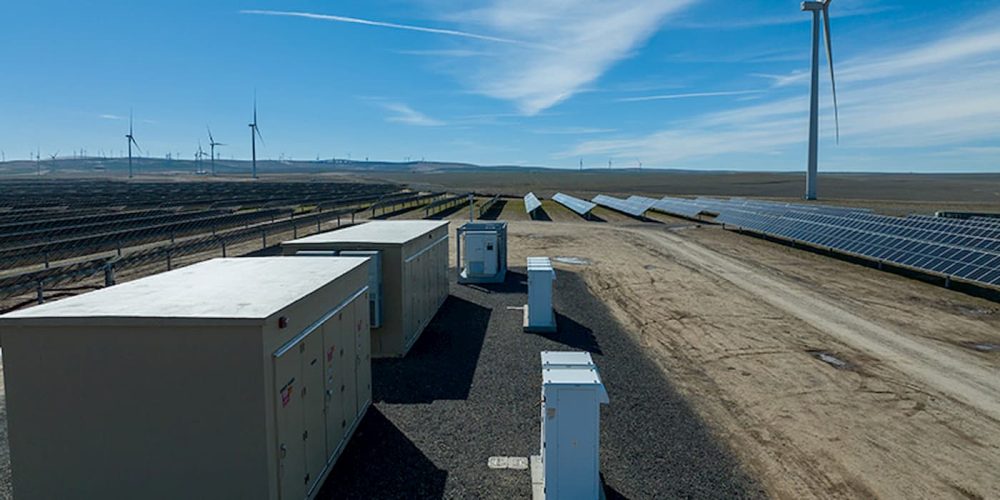
A utility-scale renewable energy plant using wind and solar combined with battery storage opened last week, a US first, with the potential of powering 100,000 homes with clean, reliable energy. The project gives us a glimpse into the future as the US shifts from fossil fuels to clean energy sources.
The Wheatridge Renewable Energy Facility is the first utility-scale development in North America to implement wind and solar generation with battery storage.
Until the Inflation Reduction Act was passed in August, energy storage projects were only eligible for tax incentives if they were exclusively based on solar energy. However, the IRA bill opens up new possibilities by providing incentives for mixed (wind and solar) and standalone battery storage projects.
As a result, more projects like the Wheatridge Renewable Energy Facility will likely be in the works. The combination of wind and solar energy can improve reliability, adding value to the grid.
The renewable energy plant is made possible through a partnership between NextEra Energy Resources and Portland General Electric. NextEra purchased the development rights to a wind farm and expanded upon it with the help of PGE, adding solar capability and battery storage.
Rebecca Kujawa, CEO of Nextera Energy, talks about the benefits of combining renewable energy sources, stating:
Bringing wind, solar and energy storage together at one site is quite a significant moment for renewable technologies.
Kujawa adds:
These facilities generate low-cost, homegrown energy and will provide millions of dollars in additional tax revenue to Morrow County over the life of the project.
The facility opened last week in Morrow County, Oregon, and is the first of its scale, according to the companies.

Details of the solar, wind, and battery storage project in Oregon
The Wheatridge Renewable Energy Project is an example of how combining renewable energy sources (solar and wind) with battery storage can help provide reliable, sustainable energy as utility companies look to cut back on carbon emissions.
The renewable energy plant includes:
- 300 MW wind capacity via 120 GE turbines
- A 50 MW photovoltaic solar energy generating facility
- A 30 MW battery storage facility
Using power generated from wind and solar, the battery storage system will save unused energy, providing it for use at any time.
Morrow County Commissioner Don Russel says:
We’re pleased to have Wheatridge Renewable Energy Facilities located in Morrow County and to play a part in providing clean energy to Oregonians. This facility provides jobs and tax revenue for our schools and county services while also supporting economic opportunities for the agricultural community. Wheatridge Renewable Energy Facilities also strengthens Morrow County’s position in the region’s clean energy economy.
The renewable energy facility created about 300 jobs during construction and employs around 10 full-time employees.
Electrek’s Take
With new incentives to start battery storage projects, the Wheatridge Renewable Energy Facility is, hopefully, the first of many of its kind from a utility company.
Combining wind and solar with battery storage offers advantages over using either system individually. Hybrid systems like these can generate energy essentially at any point. When the sun is shining, it can generate power from solar, and when the sun is not as intense in winter months, it can generate energy from the wind and store it for later use.
The combination of technology is what will provide the most value over time. To hit the US’s goal of a 100% carbon pollution-free electricity sector by 2035, more will need to be done, and this is exactly the type of project that can help us get there.
Renewable energy is being deployed around the globe. A new report shows renewable energy sources were used to meet the rise in global electricity demand in the first half of 2022. If hybrid systems like Wheatridge can be utilized, it can help speed up the transition to clean energy while building a reliable grid for the future.
Subscribe to Electrek on YouTube for exclusive videos and subscribe to the podcast.
Author: Peter Johnson
Source: Electrek



